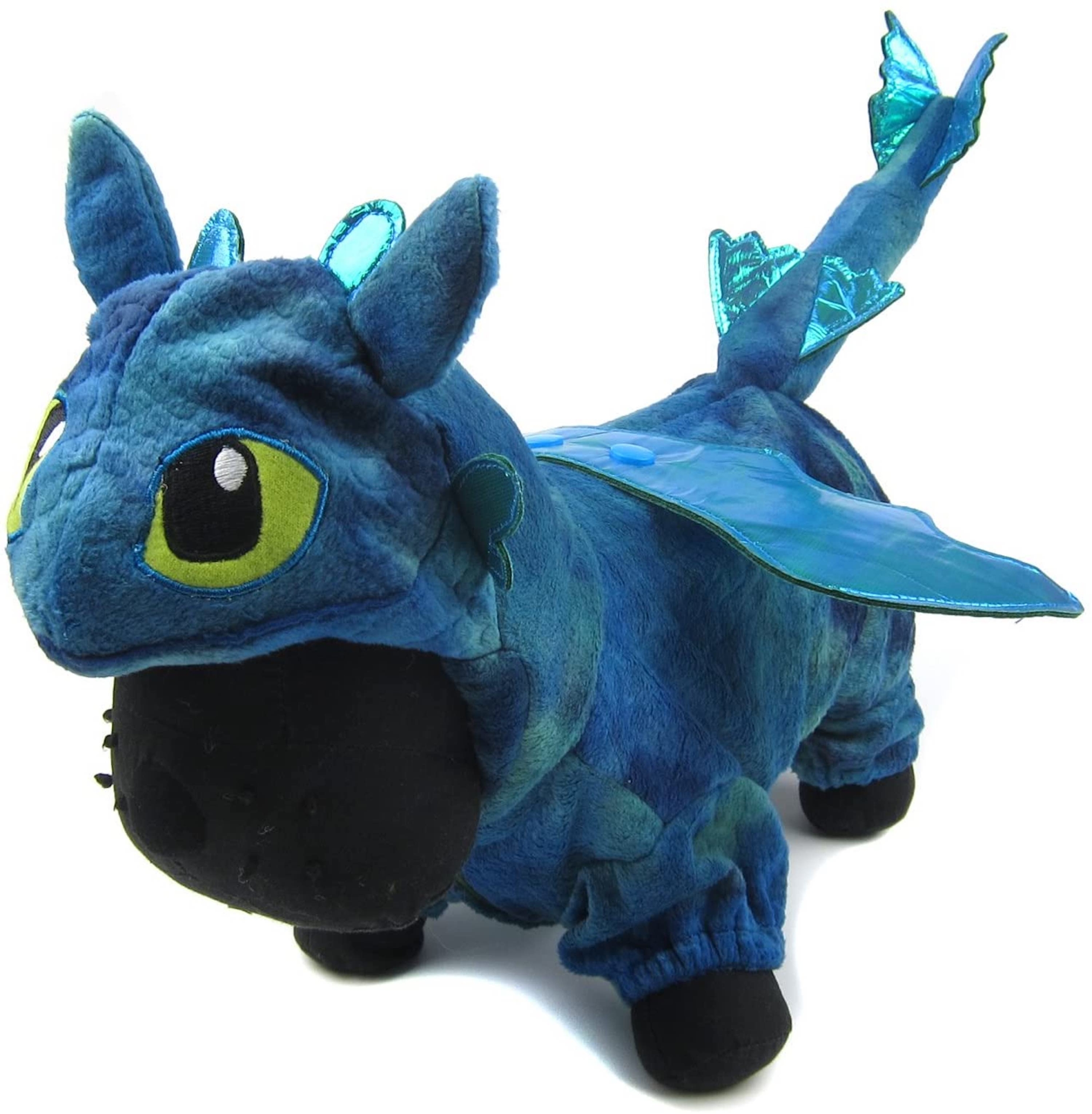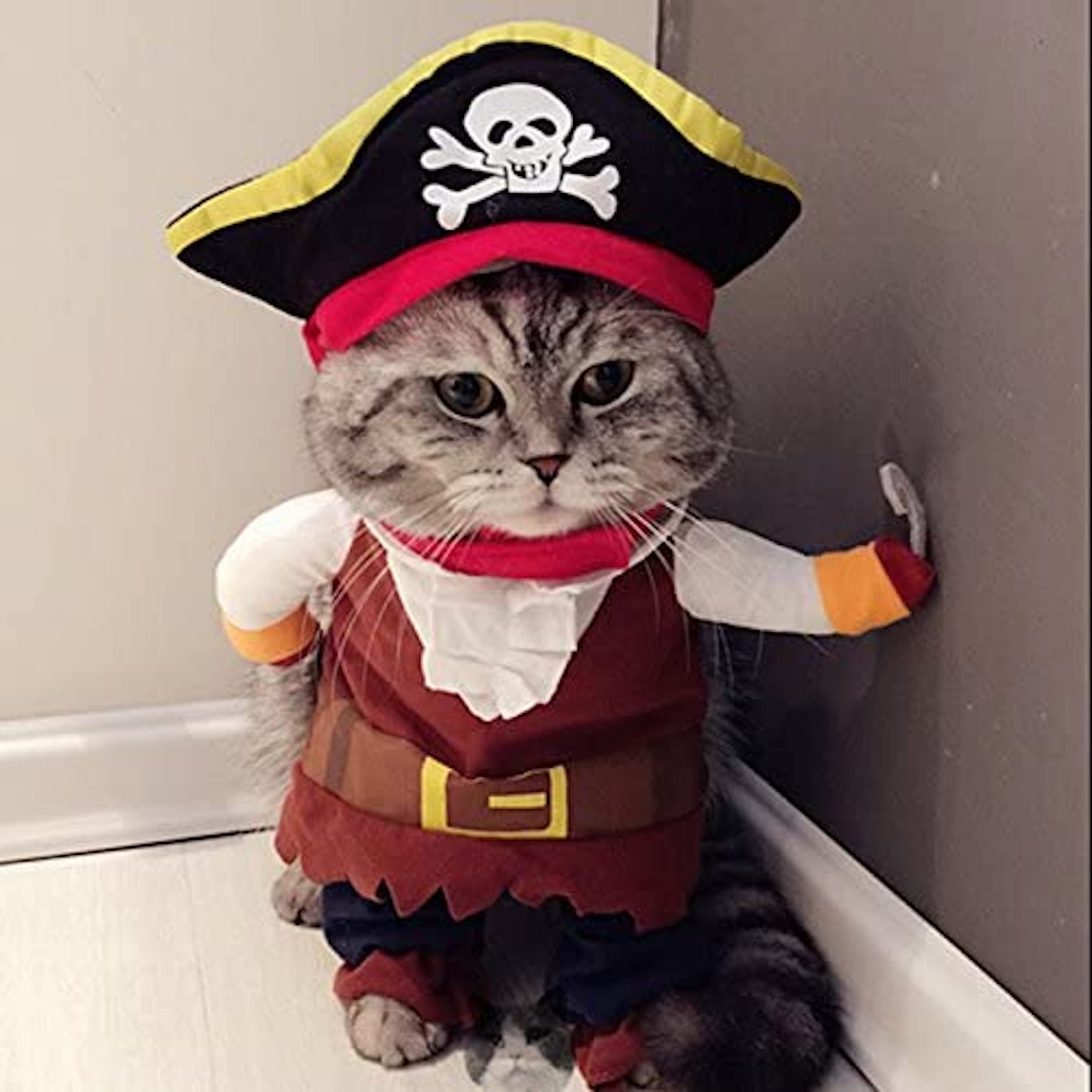Hear the word “Halloween,” and your mind immediately starts thinking of carved pumpkins, bags of chocolate, and festive costumes. People often look into Halloween costumes for their dogs so they can dress them up for the holiday. But what about cats? Are there cat costumes out there? Of course! Why should our feline friends miss out on the fun?
Considerations for cat costumes
Unless you have a hairless breed of cat, odds are your cat hasn’t spent much time in clothing. That makes shopping for a cat costume a little trickier. Not impossible, though. If you’re willing to take some time with the process, you’ll find Halloween costumes for pets that’ll suit your feisty feline.
- Measure twice: Halloween costumes for pets aren’t always specific to cats — some work for cats OR dogs. Look over the measurement guidelines carefully so your cat doesn’t feel squashed or end up drowning in their new costume.
- Fabric choice: Cats love to slink and stretch. You want fabrics that let them enjoy their natural movements. Cotton and cotton-polyester blends have the most give of any materials and make the best cat costumes.
- Watch the head: Many Halloween costumes for pets feature headpieces. They’re adorable, but you don’t want to obstruct your cat’s whiskers. Remember, those whiskers help your cat sense the world around them.
Dressing a cat in a costume
If you’ve never placed an outfit on your cat before, Halloween may present a new experience — for both of you. It’s essential to observe your cat’s body language during the costuming process. Negative responses indicate that it’s time to remove the cat costume and give your cat a break:
- Flattened ears
- Hissing
- Lashing tail
- Swatting
You may also see your cat stiffen up and fall flat on the floor. (Amusing and alarming all at once!) The reaction’s normal for cats combatting a new “threat.” As your cat adjusts to the cat costume, they’ll get up and start moving. Provide reassurance and cat treats, and they’ll learn the outfit isn’t out to get them.
Cute cat Halloween costumes
There ARE cats out there who are old pros at wearing clothes. Hairless breeds — such as the sphinx and devon rex — need outfits to protect them from dropping temperatures. Their owners have no problem breaking out Halloween costumes for their pets.
Other cats aren’t as sure about outfits. You’ll need to go slow as you introduce the different elements of the cat costume (or choose a more minimal option). You know your cat best, and you know what they’ll tolerate.
Full-body cat costumes
If your cat tolerates clothing without a second thought, you have every kind of Halloween costume for pets at your fingertips.
Want to transform your cat into a dragon? No problem! They’ll be the cutest little Nightfury on the block.

Front-leg cat costumes
Most cats aren’t the biggest fans of wearing an entire ensemble. However, they aren’t opposed to front-leg style Halloween costumes for pets. There aren’t as many restrictions on their movements, and they look adorable. It’s the perfect compromise.
Pirates never go out of style. Even if your feline darling decides they don’t want to tolerate the included hat, you’ll get the perfect swashbuckling look.
Cowboys are another famous icon that remains permanently popular and cute. You’ll recognize the cowboy with or without the10-gallon hat, allowing your cat the comfort they may request.

Minimal cat costumes
Let’s face it: Most cats aren’t wild about wearing Halloween costumes. It doesn’t mean you have to resign yourself to excluding the felines from the family Halloween portrait, though. The market provides plenty of simple cat costumes even grumpy cats tolerate without a second thought.
Does your cat wear a harness? Simply attach a set of bat wings and your cat costume’s complete! Your cat looks adorable, and they’re not struggling with anything around their legs.
Non-costume options
Of course, some cats put the brakes on even the most minimal cat costumes. You can still let your four-legged friends in on the Halloween festivities. Swap out their collar or harness for one featuring a Halloween motif.
Or you can always set up your carved pumpkin or another piece of your Halloween decor near them while they’re napping for a quick photo-op. It’s not precisely a cat costume, but it’ll make a great addition to the family scrapbook.
Feline Halloween costumes
Cats aren’t always the easiest to incorporate into the costume frenzy at Halloween. You may need to invest a little more time on desensitizing them to their cat costume. Or you might need to find the most minimal Halloween costume for pets on the market. It is possible to include your felines in the fun with a little work, though, if you’re patient.
It isn’t spooky cat season for nothing!


